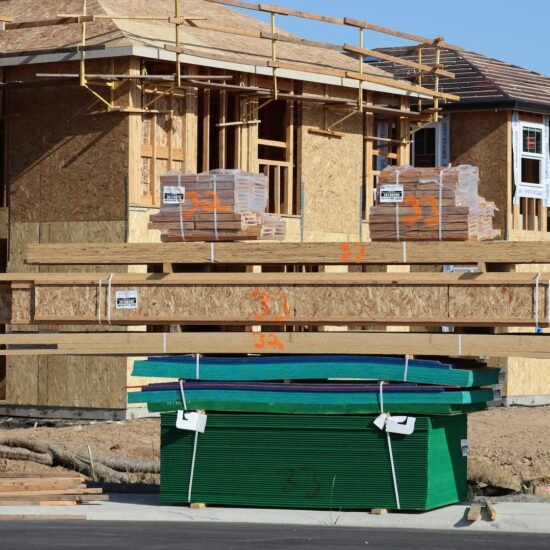
HOA Detective™ | November 14, 2025: There’s an adage in the medical profession, “The blood never lies.” When you visit your doctor for an annual wellness check, the first thing they often order is a blood test. Have you ever wondered why?
Well, it is because if you’re sick – or even trending toward illness – it will almost always show up in the blood. The blood carries the vital information that reveals the health of the patient, provided the doctor knows what to look for and how to interpret the results.
The same principle applies to the financial health of a homeowner association (HOA). If the HOA is the patient, then the reserve study/funding status check is the bloodwork. It tells the trained observer whether the Association is thriving, struggling, or headed for serious financial illness.
Reserve Planning Nomenclature: Before diving into today’s topic, let’s be clear about terminology. In HOA management, the term “reserves” refers to money set aside to pay for major maintenance, replacement, or renewal of the common elements the Association is legally responsible for maintaining.
Funds held in a savings account or under the mattress may be intended to pay for major maintenance, replacement, or renewal of the common elements, but unless they are clearly identified on the balance sheet as replacement reserves, they should NOT be considered when analyzing the Association’s reserve funding status.
Other Important Terms: The term Renewal means to “make like new.” When a capital asset is “renewed,” the condition state after renewal is assumed to be such that the life expectancy of the renewed asset will be the same as a new asset.
Major Maintenance refers to maintenance spending that is:
- Required to keep the asset functioning as intended;
- Prescribed or recommended spending, the cost of which is beyond the Association’s operating budget threshold for maintenance spending;
- Maintenance spending that meets either of the first two criteria, but is expected to occur less frequently than once a year.
Modernization means to bring an existing asset up to current condition and performance standards – to improve functionality, future repairability, or efficiency – even if the component isn’t replaced outright.
Replacement spending is exactly what it sounds like: money spent to REPLACE an asset with a new asset with “like-kind” qualities. Importantly, replacement reserves are NOT intended to improve the value of the asset in question unless, and only when, a deliberate decision has been made that such spending will result in a new and improved asset.
Reserve Study Context: A properly managed replacement reserve fund may provide financial resources to pay for any of these categories in most instances: replacement, major maintenance, renewal, or modernization. In this context, when a reserve study is conducted for a common interest development, the study should not, and need not, be restricted to Capital Replacement spending.
It is important to note that the replacement reserves do not and should not include funding for insurance deductibles and premiums, or any other expenditures unrelated to the major maintenance, replacement, or renewal of the common elements.
The reserve planning > funding > spending process is the financial bloodstream that sustains the physical assets of the Association. Like the heart muscle that pumps blood through the circulatory system of a human body, the reserve planning > funding process is the “lifeblood” of the HOA.
When this critical system is neglected, symptoms will eventually appear: deferred maintenance, declining property values, special assessments, or worse, 25-year bank loans are the inevitable result. Just like ignoring high cholesterol and skyrocketing glucose numbers, ignoring weak reserves doesn’t end well 99% of the time.
Reading the Vital Signs – Hierarchy of Planning Metrics: When assessing an HOA’s fiscal health, the Detective follows a logical diagnostic hierarchy – just like a doctor reviewing a patient’s lab results. Each level reveals something about the “patient” and whether a deeper investigation is warranted.
- No Funds Classified as Replacement Reserves – The first and most alarming indicator is an Association balance sheet that lists no replacement reserves at all. There may be a “savings” account or other cash assets on the books, but if those funds are not specifically classified as replacement reserves, it tells a trained observer that the board may not understand – or is willfully ignoring – its obligation to plan for future major expenses.
A strict application of sound reserve planning principles means that the Association that does not classify and report replacement reserves properly has no reserves at all, regardless of how much money they may have in a “savings account.”
- No Reserve Study (Current or Otherwise) – The second diagnostic marker is the absence of a reserve study. The lack of a reserve study is the equivalent of a patient who never goes to the doctor, even for a check-up. A reserve study is the HOA’s version of a medical diagnostic scan – it provides the analysis that establishes how much the Association should be saving, when components will need repair or replacement, and how the current and projected reserve fund balances compare to those needs. When there is no reserve study, the board is essentially flying blind. They might be collecting dues and paying bills, but they have no map of future capital needs obligations. This tells The Detective and his team something critical about the patient: they are not monitoring their vital signs. And that is never good news.
- A Compromised Reserve Study – The third category is the compromised reserve study. A study exists, but the report cannot be trusted. This is the financial equivalent of bad lab results produced by an unqualified or conflicted technician. The signs of a compromised reserve study are numerous. A short list includes:
> A provider whose credentials, independence, or objectivity are questionable.
> A conflict of interest where the reserve study provider, technical expert, or management company (Manco) is intertwined in a way that clouds independence.
> A study that lacks key analytical metrics, such as the percent funded or fully funded balance.
> A report that omits required disclosures, or is based on outdated or unverified data.
> No recent site visit, or a site visit that was conducted so long ago it is irrelevant.
> A report that’s outdated and no longer reflects current financial or physical conditions.
> Reliance on information provided by vendors who stand to benefit from the advice.
In the case of compromised reserve studies, we see the same pattern time and again:
- The usual suspects in place – RS provider / Manco / technical advisor.
- Manco) / vendor entanglement to the point that the independence is only nominal.
- Reserve study provider depends on a Manco for referrals – or worse, when both entities share ownership, staff, or strategic alignment – the result is a study that serves a narrative rather than an objective truth. The analysis becomes an instrument of convenience and a pathway to future revenue streams, not accountability.
When objectivity goes out the window, integrity follows close behind. And integrity, in this line of work, is the bedrock of reliability.
A compromised reserve study doesn’t just obscure reality – it actively misleads the board, auditors, and homeowners alike. It gives a false sense of “reserve fund wellness” while fiscal disease spreads quietly beneath the surface.
Reserve Study Validation – the Missing Standard: Perhaps the most troubling issue is that validation – the process of confirming that a reserve study’s assumptions, data, and conclusions are factually supported – is not even recognized in the so-called industry “Reserve Study Standards.”
In other professions, validation is non-negotiable. Engineers must validate calculations; auditors must validate financial statements and must issue opinions regarding specific issues. Doctors are expected to validate lab results through peer review and testing. The medical profession is the birthplace of the “second opinion,” as everybody knows. Yet in the reserve study world, there is no formal mechanism or requirement to validate whether the analytical inputs are correct, whether projections are defensible, or whether the methodology is reproducible.
In regulated professional arenas, validation is welcomed, and often REQUIRED by the professional standards established by the discipline involved, or by state law.
In the reserve study professional world, no such process exists. There are no meaningful tests to determine if the preparer is compromised or conflicted.
This omission leaves a gaping hole in the credibility of the entire practice. Without validation, a reserve study is little more than an opinion letter dressed in spreadsheets. And when those opinions are shaped by providers entangled with management companies or consultants who have something to gain from a particular outcome, the risk to the Association—and to its homeowners—cannot be overstated.
- Poor Funding Metrics – Even if an HOA has a legitimate reserve study, the next layer of analysis involves funding metrics – the numerical indicators that reveal how well the board is following through on recommendations. Key indicators include:
> Percent Funded Level (Percent of Fully Funded Balance) – a compares the reserve balance to the amount that should exist, based on a straight-line calculation asset deprecitation.
> Reserve Fund Equity – Current reserve balance divided by projected spending liability. Low equity means the HOA is undercapitalized.
> Allocation Levels: The percentage of total revenue allocated to reserve funding. If this number is low, the association is starving its long-term maintenance account to feed short-term budgets – Associations with low reserve allocations are often the equivalent of te Little Dutch Boy who runs out of fingers to fill the holes in the dike.
> Minimum Year-End Fund Balance: Compares projected reserves at year-end to average annual expenditures – a reserve fund balance that is projected to fall below one year’s worth of spending is a strong indicator of potential special assessment risk.
> Planning Horizon: A sound reserve plan looks at least 30 years ahead. Anything shorter will omit long-term reserve spending liabilities that will eventually become near-term liabilities – usually at the worst possible time.
These metrics are the HOA’s blood pressure, cholesterol, and glucose readings rolled into one. Ignore them, and the disease of deferred maintenance will spread unchecked until a major failure forces emergency treatment – usually in the form of special assessments or loans that burden homeowners.
The Doctor’s Orders: Healthy HOAs share one defining trait: they monitor and manage their reserves with precision and discipline. They classify funds properly, maintain up-to-date and objective reserve studies, and adjust funding levels proactively rather than reactively. Planning assumptions are revisited, validated, and revised as the community ages, as economic conditions warrant, and when credible advice is presented.
When a buyer analyzes the Association’s reserve funding status, you are looking at a blood test panel. For those who know how to read the numbers, the story is always there – written in the Association’s own financial bloodstream – and as we say around the CIDA office: The Reserves Never Lie.
Because You’re Buying More Than a Home






